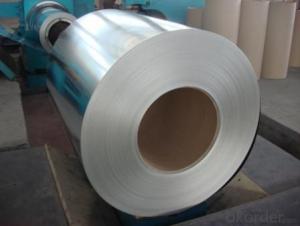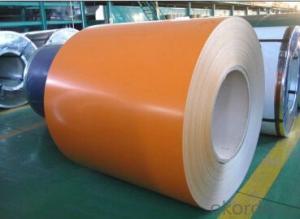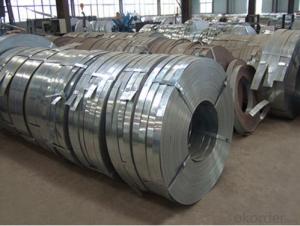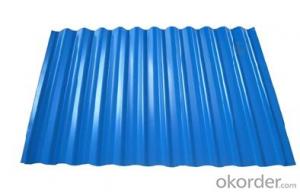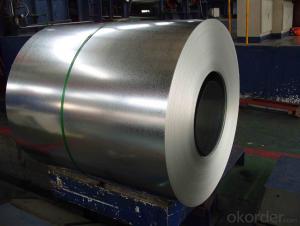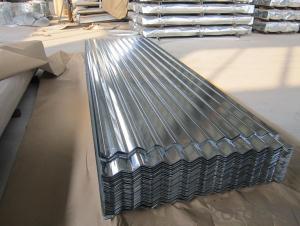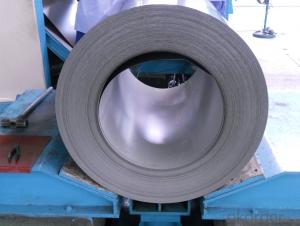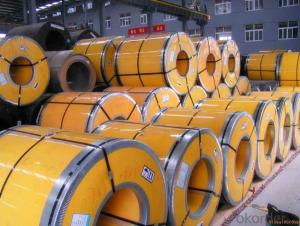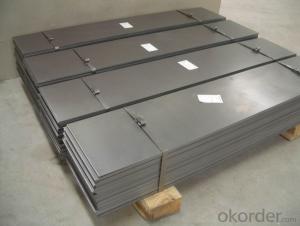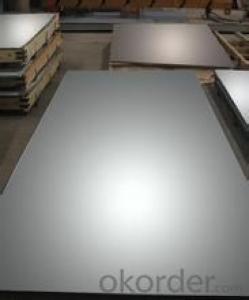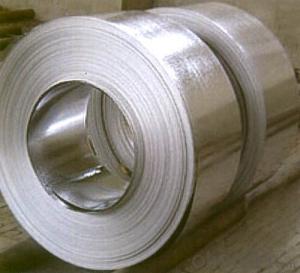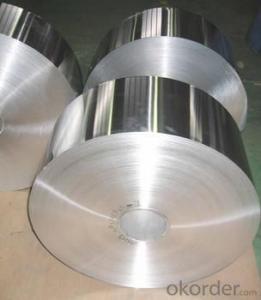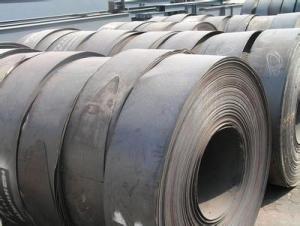Galvanized Steel Coil/Hot Dipped Galvanized Steel Strips Coil
- Loading Port:
- Tianjin
- Payment Terms:
- TT OR LC
- Min Order Qty:
- 1000 m.t.
- Supply Capability:
- 100000 m.t./month
OKorder Service Pledge
OKorder Financial Service
You Might Also Like
Galvanized Steel Coil/Hot Dipped Galvanized Steel Strips Coil Description:
Galvanized steel coil are widely used in the construction industry, as raw material for the production of corrugated panels, fencing products, drywall panel profiles, ventilation systems etc. Recommended for both outside and inside usage, galvanized steel has a high resistance to corrosion in different environments, due to a protective layer of zinc of 100 – 180 grams per square metre.
Main Features of Galvanized Steel Coil/Hot Dipped Galvanized Steel Strips Coil:
Hotdip galvanized steel coils are produced by immersing steel in a zinc bath. An appropriate galvanizing process requires a pretreatment process during which the steel passes through different baths which prepare the surface for zinc coating. In this stage, chemicals are used to clean the surface of the steel. After the chemical treatment, the steel coils pass through a bath of melted zinc at temperatures around 460 ° C. The resulting uniform coating is finished through a process of skin-passing to provide smooth and shiny appearance of the finished product. To store for a longer period, the hot-dip galvanized coils can be delivered with a final oil coating, according to the customer’s demand.
Galvanized Steel Coil/Hot Dipped Galvanized Steel Strips Coil Images:
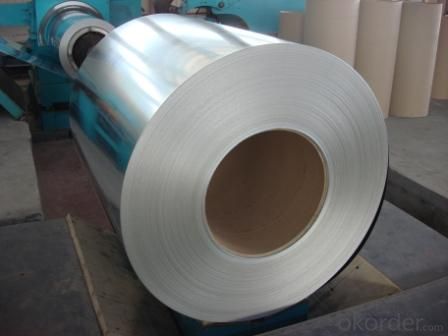
Galvanized Steel Coil/Hot Dipped Galvanized Steel Strips Coil Specifications:
Steel strips coils galvanized
Material: Q195, Q215, Q235, Q345B, SGCC, DX51D+Z
Thickness:0.75-4.5mm
Width:32-750mm
Zinc coating: 60-550g/m2
ITEM | |
Production | prime hot dipped galvanized steel strip coil |
Port | Tianjin, China |
Category | Minerals & metallurgy |
Thickness | 0.17-3.0mm |
Width | 600-1950mm |
Material Grade | SGCC,SGCH,SGCD1-SGCD3,DX51D |
Spangle | normal spangle, large spangle, small(min) spangle, zero spangle |
Technique | cold rolled,hot dipped galvanized |
Standard | ASTM,GB ,AISI,JIS,EN |
Test | With Hydraulic Testing, Eddy Current , Infrared Test |
Application | Widely used for roofs, outer walls, ovens, explosive-proof steel, electrically controlled cabinets,galvanized tube/pipe, ceiling channel, building material |
Surface | Galvanized |
Package | covered with waterproof-paper,strapped by strips. Or as customer’s requirement |
Sample | Common products, we can provide freely, for special production,we can depends on negotiation. |
MOQ | 5 tons |
Payment | 100% L/C at sight, 30% T/T in advance, and the balance against the copy of B/L or negotiation |
Delivery time | Within 10-25 days, according to quantity, asap save customer’s time |
Certificate | ISO9001:2008 |
FAQ:
Q: Are you manufacturer of trading company?
A: Yes.
- Q: How do steel strips perform in extreme temperature conditions?
- Steel strips generally perform well in extreme temperature conditions. Steel has a high melting point and retains its strength and durability even at very high temperatures. In extremely cold temperatures, steel strips may become more brittle, but they still retain their structural integrity. Overall, steel strips are known for their excellent performance in extreme temperature conditions.
- Q: Can steel strips be used in the production of springs or fasteners?
- Yes, steel strips can be used in the production of springs or fasteners. Steel strips provide the necessary strength, durability, and flexibility required for these applications. They can be formed, bent, and shaped to create springs or fasteners with varying sizes and configurations.
- Q: How are steel strips processed for improved surface finish?
- Achieving an improved surface finish for steel strips can be accomplished by employing various methods. One commonly used technique involves pickling and oiling. In this process, steel strips are submerged in an acidic bath, typically hydrochloric acid, to eliminate any scales or impurities present on the surface. This step ensures the creation of a smooth and clean surface. Following pickling, the strips are thoroughly rinsed and then coated with oil to prevent oxidation and enhance the overall appearance. Another approach to enhancing the surface finish of steel strips is through cold rolling. This method entails passing the strips through a series of rollers at room temperature. Not only does this process reduce the thickness of the strips, but it also improves the surface finish. Cold rolling plays a crucial role in producing a uniform and smooth surface, effectively minimizing imperfections and roughness. Furthermore, annealing can be employed as a means of improving the surface finish of steel strips. Annealing is a heat treatment process that involves heating the strips to a specific temperature and gradually cooling them. This technique effectively relieves internal stresses and enhances the crystal structure of the steel, ultimately resulting in a refined and smoother surface. Moreover, mechanical treatments like grinding or polishing can further enhance the surface finish of steel strips. Grinding employs abrasive wheels or belts to eliminate imperfections and roughness from the surface. On the other hand, polishing utilizes a fine abrasive material to create a smooth and glossy surface. To summarize, various methods such as pickling and oiling, cold rolling, annealing, and mechanical treatments like grinding and polishing can be employed to achieve an improved surface finish for steel strips. These processes effectively eliminate impurities, reduce roughness, and result in a clean and smooth surface, enhancing both the appearance and performance of the steel strips.
- Q: How are steel strips tested for tensile strength?
- Tensile testing is the method used to test the tensile strength of steel strips. This method involves applying a force to the strip until it breaks, while measuring the force required for the break. Typically, this testing is done using a specialized machine called a tensile testing machine. To conduct the test, a sample of the steel strip is prepared in a specific shape and size, usually in the form of a dog bone-shaped specimen. The specimen is then securely clamped into the grips of the tensile testing machine. One grip is attached to the upper part of the machine, while the other grip is attached to the lower part. Once the specimen is in place, the machine gradually applies an increasing force in the opposite direction of the clamps. This force causes the steel strip to stretch and elongate until it eventually fractures. Throughout this process, the machine records the applied force and the corresponding elongation of the strip. The recorded data is then plotted on a stress-strain curve, which illustrates the relationship between the applied force (stress) and the resulting deformation (strain) of the steel strip. By identifying the maximum force the strip can withstand before breaking, the tensile strength of the strip can be determined. Tensile testing provides valuable information about the mechanical properties of the steel strip, including its ultimate tensile strength, yield strength, and elongation. These properties are crucial in determining the suitability and quality of the steel strip for specific applications in industries such as construction and manufacturing.
- Q: How are steel strips used in the manufacturing of marine equipment?
- Steel strips are commonly used in the manufacturing of marine equipment due to their high strength and durability. These strips are often used to construct the structural components of ships, such as hulls, decks, and bulkheads. Additionally, steel strips are utilized in the fabrication of various marine equipment, including propellers, anchors, and chain cables. The corrosion resistance properties of steel strips make them suitable for withstanding the harsh and corrosive marine environment.
- Q: What are the different coating options for steel strips?
- There are several coating options available for steel strips, including galvanized coatings, zinc coatings, tin coatings, and polymer coatings. Each coating option provides specific benefits such as corrosion resistance, improved durability, and enhanced aesthetics. The choice of coating depends on the intended application and the desired properties of the steel strips.
- Q: What are the main factors affecting the corrosion resistance of steel strips in different environments?
- The main factors affecting the corrosion resistance of steel strips in different environments include the composition of the steel, the presence of corrosive substances or agents in the environment, humidity, temperature, and the duration of exposure to the corrosive environment. Additionally, the surface condition of the steel, such as the presence of surface coatings or protective layers, can also influence its corrosion resistance.
- Q: What are the common dimensions for steel strips?
- The common dimensions for steel strips vary depending on their intended use and industry standards. However, some commonly available dimensions for steel strips include widths ranging from 0.5 inches to 24 inches, and thicknesses ranging from 0.005 inches to 0.5 inches.
- Q: How are steel strips used in the chemical industry?
- Due to their unique properties and versatility, steel strips find various applications in the chemical industry. One common use is in the manufacturing of chemical storage tanks and vessels, where they are frequently employed to construct the tanks' outer shells. This utilization provides the necessary strength and durability to safely contain hazardous chemicals. Additionally, steel strips are utilized in the production of different chemical equipment, such as pumps, valves, and pipe fittings. These components require materials capable of withstanding high pressure and extreme temperatures. Therefore, steel strips are an ideal choice due to their excellent mechanical properties. Furthermore, steel strips are essential in the fabrication of heat exchangers, which play a crucial role in heat transfer processes within the chemical industry. These strips are shaped into tubes or plates, enabling efficient heat exchange between various fluids. Consequently, they contribute to the overall energy efficiency of chemical processes. Moreover, steel strips possess corrosion resistance, a vital characteristic highly valued in the chemical industry. As chemical plants often handle corrosive substances, steel strips with appropriate coatings or alloys can provide adequate protection against corrosion. This ensures the longevity and reliability of equipment and infrastructure. In conclusion, steel strips are indispensable in the chemical industry, serving roles in the construction of storage tanks, manufacturing of chemical equipment, fabrication of heat exchangers, and providing corrosion resistance. Their strength, durability, and ability to withstand high pressure and extreme temperatures make them the preferred material choice for diverse chemical applications.
- Q: How are steel strips used in the production of metal handrails?
- Steel strips are used in the production of metal handrails to provide structural strength and stability. They are typically shaped and welded together to form the framework of the handrail, ensuring durability and safety.
Send your message to us
Galvanized Steel Coil/Hot Dipped Galvanized Steel Strips Coil
- Loading Port:
- Tianjin
- Payment Terms:
- TT OR LC
- Min Order Qty:
- 1000 m.t.
- Supply Capability:
- 100000 m.t./month
OKorder Service Pledge
OKorder Financial Service
Similar products
Hot products
Hot Searches
Related keywords
